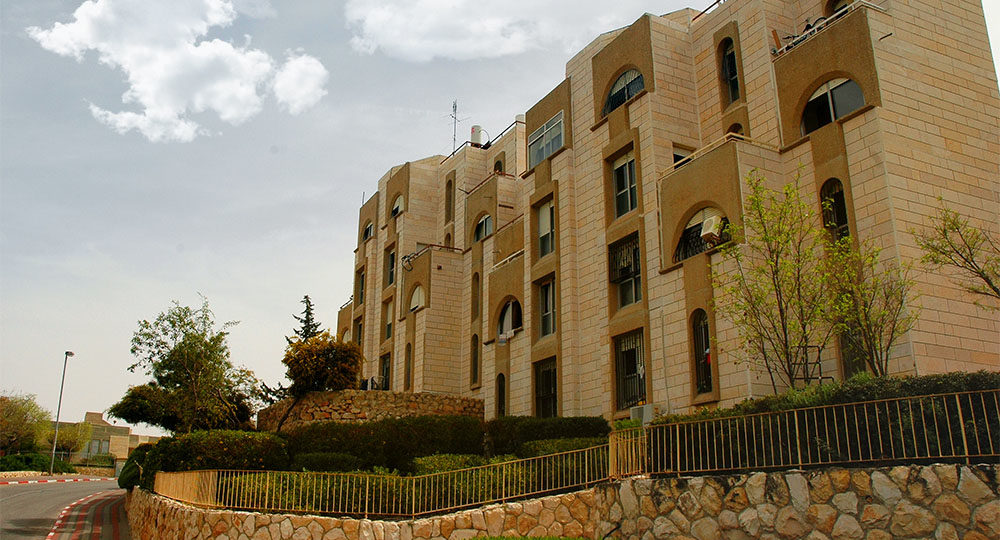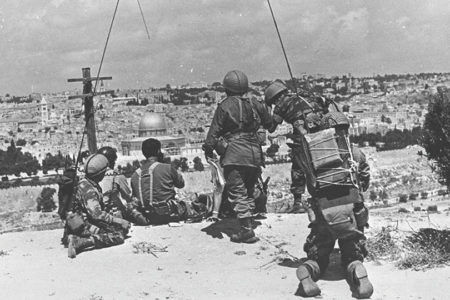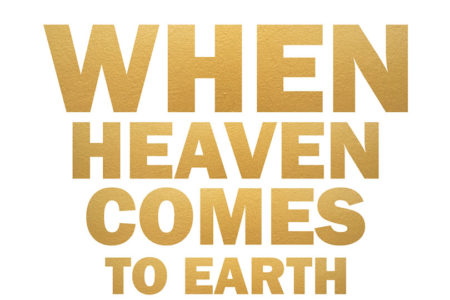Ma’ale Adumim: It’s Not What You Think It Is
There is a lot of talk these days that Israel’s “settlements” are preventing peace. Most people, however, know little about these areas and why they exist in the first place.
“Welcome to Ma’ale Adumim!” The sign greeted us as our tour bus pulled into the “settlement” located three miles outside Jerusalem.
Before we arrived in the spring of 2000, I asked the 16 members of our Friends of Israel Youth Adventure team (now called ORIGINS) to describe what they thought a settlement would look like. They knew the term because the news media used it constantly to refer to Israeli communities in the West Bank.
They told me they visualized a few religious Jews living deep in Arab territory in housing that looked like shacks. They knew the communities were controversial and located outside the pre-1967 Six-Day War borders and that the Palestinian-Arabs viewed them as acts of terror, claiming Israel stole their land.
My team’s description was not unique. In fact, in 2017, many people would describe the settlements the same way. And they, too, would be wrong.
Like the other settlements, Ma’ale Adumim is located in the biblical land of Judea and Samaria, where many events in the Bible took place. The name means “Ascent of Red” because of the red rock formations leading to it, first described in Joshua 15:7 as the border between the tribes of Judah and Benjamin.
And we never did see any shacks. Instead, we saw a beautiful city with a population of 25,000 (more people than in the borough of Princeton, New Jersey), a university, dozens of public schools, strip malls, grocery stores, drug stores, synagogues, recreational facilities, a lake, a conservatory, and several parks. My team’s perception was definitely skewed.
IT IS NO DREAM
Trace the history of modern Israel from its inception to the current day in It Is No Dream by Elwood McQuaid.
Ma’ale Adumim exists because the Arabs failed to destroy Israel in 1967. In May of that year, a Cairo radio broadcast explained their thinking: “The existence of Israel has continued too long. We welcome the Israeli aggression. We welcome the battle we have long awaited. The peak hour has come. The battle has come in which we shall destroy Israel.”
That month, Egyptian President Gamal Abdel Nasser told the Arab trade unions, “We are ready to enter a general war with Israel. The battle will be a general one, and our basic objective will be to destroy Israel.” They regarded Israel’s existence as a reason to exterminate it. Unfortunately, that fact has not changed.
In the fray were Egypt, Syria, and Jordan. For weeks Israel had tried diplomacy to end the tension, to no avail. So on June 5, 1967, fearing an invasion, Israel executed one of the most dramatic military moves in history. It launched a preemptive strike. And in less than 144 hours (six days), it captured the Sinai and Gaza from Egypt; Judea, Samaria, and eastern Jerusalem from Jordan, including the Jewish holy sites and Old City; and the Golan Heights from Syria. Nasser, who had hoped to toast Israel’s destruction on the shores of Tel Aviv, instead suffered an overwhelming, humiliating defeat.
Surprisingly, soon after the victory, Israel let it be known it wanted to make peace. Normally, the victor dictates peace. Instead, Israel was interested in negotiations. The Israelis offered land in exchange for Arab recognition of Israel. In July 1967, the answer came. The Arabs met in Khartoum, Sudan, and issued the infamous three no’s of Khartoum: “No peace with Israel, no negotiations with Israel, no recognition of Israel.”
With the Arab refusal to recognize Israel and jus ad bellum, “the right to war,” Israel set its sights on ensuring its security. Over time, successive Israeli governments gradually allowed the establishment of more and more Jewish communities on land strategic to the country’s safety. Israel’s action made perfect sense. For centuries nations have been established by winning wars. Few, if any, gave conquered land back (as Israel has). Yet in 1979, Israel returned the oil-rich Sinai to Egypt in exchange for a peace treaty. In 1994, Jordan recognized Israel, was given some land, and has remained at peace with the Jewish state.
Today, 80 percent of the towns in Judea and Samaria are located near the pre-1967 Green Line, which separates Israel and the West Bank. From 1948 to 1967, Jerusalem was divided. Jordan controlled eastern Jerusalem, while Israel controlled western Jerusalem. A barrier went down Jaffa Street. For 19 years, Jordan permitted no Jews to enter eastern Jerusalem. It destroyed every synagogue there and desecrated Judaism’s holiest site, the Western Wall.
Once Jerusalem was liberated in 1967, Jewish people streamed into the city to pray at the Western Wall. Today, 360,000 Jewish people live in and near the Old City, with another 400,000 in towns throughout Judea and Samaria.
The Arabs’ 1967 Khartoum attitude holds true today and is reflected in the posture of the Palestinian Authority (PA) and terrorist groups like Hamas and Hezbollah. They all proudly proclaim they will never recognize a Jewish state. As long as they work to destroy Israel, Israel is justified in protecting itself. Settlements help ensure security. Yet Israel has demonstrated its willingness to work for peace.
In 2005, the Israel Defense Forces forced Jewish settlers out of the Gaza Strip, where they had lived for more than three decades. The Israeli government turned all of Gaza over to the Palestinians in the name of peace. Hamas came to power and soon launched thousands of rockets into Israel. In 2009 and 2010, Israel suspended all construction in Judea and Samaria with the hope that the PA would come to the negotiating table. It never did.
In December 2016, Israeli Prime Minister Benjamin Netanyahu declared, “No one wants peace more than the people of Israel. Israel remains committed to resolving the outstanding differences between us and the Palestinians through direct negotiations. This is how we made peace with Egypt; this is how we made peace with Jordan; it’s the only way we’ll make peace with the Palestinians.” The PA still refuses.
To make matters worse, the world seems confused as to what constitutes terror. Building houses is not an act of terror; strapping a bomb to oneself to blow up people in a shopping center is terror. Building an addition to one’s house is not an obstacle to peace; refusing to negotiate is an obstacle.
Today Ma’ale Adumim is still considered a settlement, though it is a city of 40,000 people. The university has closed, but students need travel only 10 minutes to attend the Hebrew University. In addition, the city has added an art museum, swimming pools, basketball courts, and soccer fields. It is a full-fledged suburb of Jerusalem.
And there is good news for Jews and Christians. Neither a two-state solution nor a one-state solution nor a no-state solution will prevent God from keeping His promise given in Jeremiah 31:35–37 and Ezekiel 37. Israel will never be destroyed, and there will be peace when the King of kings rules. Maybe some-one will explain that to the nations of the world.








Thank you Steve for this clear explanation of the situation in Israel. May God richly bless your work as you labor for His Glory.